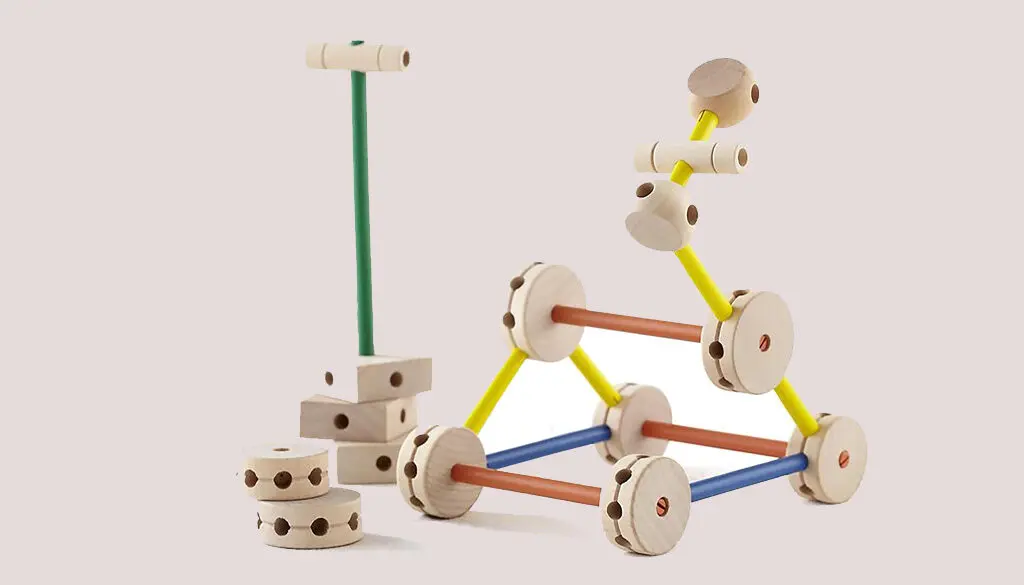Setting boundaries with kids is key, but it can be tough, especially without yelling. Gentle discipline teaches kids to control themselves and behave well without punishment.

Using positive parenting helps create a caring space for kids to grow. It builds a strong, loving bond between parents and children. This method focuses on respect and understanding.
Managing child behavior well is vital for a peaceful home. In this article, we’ll share gentle discipline tips and ways to handle child behavior without yelling.
Key Takeaways
- Understand the principles of gentle discipline
- Learn positive parenting techniques for setting boundaries
- Discover peaceful parenting practices for effective child behavior management
- Explore strategies for creating a nurturing environment
- Develop skills for managing child behavior without yelling
Understanding the Power of Gentle Discipline
Gentle discipline is a kinder way to parent than old methods. It uses empathy and talking to build a safe, loving space for kids to grow.
What Is Gentle Discipline and Why It Works
Gentle discipline is about understanding and respect between parents and kids. It means setting rules while caring about how kids feel. This way, kids learn to control themselves, feel for others, and feel secure.
Using gentle discipline helps parents and kids build a strong, trusting bond. Kids learn why rules are important and take pride in their actions.
The Impact of Yelling on Child Development
Yelling hurts a child’s feelings and self-worth. It can make kids anxious, scared, or even mean. This can mess up how they handle their feelings and make friends later on.
Studies show yelling can change a child’s brain, especially how they handle feelings and stress. Gentle discipline, however, creates a calm place for kids to grow up.

The Connection Between Boundaries and Security
Clear boundaries are key for kids’ safety and happiness. They give kids a sense of what’s expected and help them feel secure. When boundaries are set gently, kids feel protected and supported.
Setting boundaries helps kids learn to be responsible and independent. This builds their confidence as they explore the world.
Why Children Need Clear Boundaries
Children do best when they have clear rules. This gives them a sense of safety and order. It helps them know what’s expected, making them less confused and anxious.
How Boundaries Support Emotional Regulation
Boundaries are key for kids to manage their feelings. Knowing the limits helps them control their emotions and actions. Effective discipline strategies with clear rules help kids learn to regulate themselves.
Dr. Laura Markham, a clinical psychologist, says, “Children feel safe when they know what’s expected of them. Boundaries give them a sense of security and stability. This lets them explore and learn without too much fear or worry.”
“The most important thing you can give your child is a sense of safety and security. Boundaries provide that.”
| Boundary Type | Description | Example |
|---|---|---|
| Physical Boundaries | Define personal space | Not touching others without permission |
| Emotional Boundaries | Respect others’ feelings | Not teasing or mocking others |
| Behavioral Boundaries | Outline expected behavior | Sharing toys and taking turns |
The Difference Between Boundaries and Punishment
It’s important to know the difference between boundaries and punishment. Boundaries are about setting clear rules for behavior. Punishment is about consequences for bad behavior. Effective communication with kids helps set boundaries they can understand and respect.
- Boundaries are proactive, setting clear expectations.
- Punishment is reactive, responding to misbehavior.
Setting Age-Appropriate Expectations
It’s crucial to set rules that fit the child’s age. What works for a toddler might not be right for a school-age child. Knowing family dynamics and the child’s stage of development helps set realistic rules.
For example, a toddler needs simple, clear rules. A school-age child can handle more complex rules and consequences. Parenting skills that match the child’s age and development are more effective.

Recognizing Your Triggers as a Parent
The journey to gentle discipline starts with knowing ourselves. As parents, we face many challenges that test our patience. It’s key to know what makes us frustrated to keep our cool and create peace at home.
Identifying Your Personal Yelling Triggers
To practice gentle discipline, we must know what makes us yell. Common things that make us lose our temper include:
- Disobedience or defiance
- Mess or disorganization
- Sibling rivalry or conflict
- Repeated requests or reminders
By knowing these triggers, we can better handle parenting challenges. We can find ways to react more calmly.
Creating a Proactive Calm-Down Plan
A calm-down plan helps us manage our feelings when things get tough. This plan might include:
- Taking a deep breath or counting to ten
- Stepping away from the situation for a moment
- Engaging in a relaxing activity, such as meditation or a short walk
- Using positive self-talk to calm down
Having a plan helps us stay calm. We can then respond to our kids in a kinder way.
Breaking Generational Discipline Patterns
Many parents follow the discipline they knew as kids without thinking. To change this, we need to reflect and make a conscious effort. It means:
- Recognizing the discipline methods used by our parents
- Assessing the effectiveness and impact of these methods
- Consciously choosing alternative approaches that align with our values and parenting style
By changing our discipline ways, we can make a better home for our kids. They can grow up in a more positive and supportive place.
Effective Communication Strategies for Toddlers
Toddlers need clear communication from parents. They are learning to explore and be independent. This can lead to tantrums and challenging behaviors.
Simple Language Techniques That Toddlers Understand
Using simple language is key when talking to toddlers. Avoid complex sentences and give clear instructions. For example, “Put on your shoes” is better than “Let’s go get your shoes on.”
Simple language techniques also mean labeling emotions and validating feelings. Saying “You’re feeling angry right now, aren’t you?” can calm a toddler. It helps them understand and process their feelings.
“When you talk to your child in a language they can understand, you build trust and encourage cooperation.”
Using Visual Cues and Consistent Routines
Visual cues are great for communicating with toddlers. They can be gestures, pictures, or objects that show what’s next. A visual schedule, for example, can ease anxiety about the day’s plans.
Consistent routines make toddlers feel secure. They know what to expect, which reduces tantrums. A bedtime routine, for instance, signals it’s time for sleep.
| Visual Cue | Purpose | Example |
|---|---|---|
| Gesture | To signal an action | Waving goodbye |
| Picture Schedule | To outline daily routines | A chart showing morning activities |
| Object Cue | To indicate an activity | Using a toothbrush to signal brushing teeth |
Redirection and Distraction Without Giving In
Redirection means changing a toddler’s focus to a better choice. For example, if they’re throwing blocks, offer a ball toss game. This redirects their energy positively.
Distraction is similar but more subtle. It can be a funny face, a song, or an interesting event. The goal is to distract without giving in to tantrums.
Using these strategies daily can create a peaceful home. Good communication is key to gentle discipline. It helps parents set boundaries without yelling.
Boundary-Setting Techniques for Preschoolers
For preschoolers, learning about boundaries is crucial. It helps them develop self-control and feel secure. At this age, kids are exploring their independence and testing limits. So, it’s important for parents to use effective ways to set boundaries.
Implementing Natural and Logical Consequences
Using natural and logical consequences is a great way to teach preschoolers about boundaries. This method shows kids how their actions lead to certain outcomes. For example, if a child doesn’t wear a coat, they might get cold outside. This teaches them to dress right without punishment.
- Natural consequences are directly related to the action (e.g., getting wet from playing in the rain without a raincoat).
- Logical consequences are related to the misbehavior but not directly caused by it (e.g., losing a toy because it was not put away properly).
Offering Limited Choices That Empower
Preschoolers enjoy showing their independence. Giving them limited choices is a good way to help them feel in control. For instance, asking “Do you want to put your toys away now or after dinner?” lets them decide while ensuring the task is done.
Using Time-In Instead of Time-Out
Time-outs can sometimes feel harsh. Using “time-in” is a kinder approach. Time-in means staying with the child, offering comfort, and teaching them to manage their feelings. This method strengthens the bond between parent and child and helps kids learn to handle their emotions.
By using these boundary-setting techniques, parents can create a supportive environment. This environment promotes healthy growth and respectful communication. These effective discipline strategies help manage current behavior and prepare kids for future social and emotional skills.
Navigating Boundaries with School-Age Children
Setting boundaries with school-age kids needs clear rules, open talks, and respect for each other. At this age, kids start to figure out who they are and deal with more complex social situations.
Co-Creating Family Rules and Expectations
Getting kids to help make family rules can really help them follow them better. When kids have a say in the rules, they feel more connected to them.
For example, having a family meeting to set rules can be very helpful. It teaches kids about the value of rules and how they contribute to the family.
Problem-Solving Conversations That Build Skills
Talking through problems with school-age kids is key for their growth. These talks help them learn to break down problems, think of solutions, and understand the effects of their choices.
“The way we talk to our children becomes the way they talk to themselves.” This quote shows how our words shape their thinking and self-talk.
Teaching Self-Monitoring and Responsibility
Teaching kids to watch themselves and own up to their actions is essential. By asking kids to think about their actions, parents help them feel responsible.
- Encourage kids to keep a journal or log to track their progress and reflect on their actions.
- Use positive reinforcement to acknowledge and reward responsible behavior.
- Gradually give children more independence as they demonstrate their ability to handle responsibilities.
Managing Transitions Without Power Struggles
Managing transitions can be tough for parents. It’s hard to get kids to stop playing or leave the park without tantrums. But, with the right strategies, parents can make these moments easier for everyone.
Preventing Meltdowns with Transition Warnings
Warning kids before a transition can really help. Simple, clear words can prepare them for the change. For example, “We have five more minutes before we leave the park” helps them get ready.
Consistency is key in using these warnings. It’s not just about giving a warning once. It’s about making it a regular part of your routine. This helps young children understand time better.
Creating Routines That Flow Naturally
Having routines that make sense can make transitions smoother. For example, a consistent after-school routine can help kids adjust from playtime to homework. The goal is to make these changes as seamless as possible.
| Activity | Transition Cue | Next Activity |
|---|---|---|
| Playtime | 5-minute warning | Clean-up |
| Clean-up | Transition song | Snack Time |
| Snack Time | Finishing snack | Homework |
Handling Resistance with Connection First
When kids resist transitions, it’s important to listen and understand. Acknowledging their feelings can help calm them down. For example, “I know you’re having fun, and it’s hard to stop” shows you get it.
By connecting with your child, you can make transitions better. This approach strengthens your bond and helps manage tough moments.
Maintaining Boundaries During Challenging Moments
Keeping boundaries during tough times is key to gentle discipline. It makes a safe and predictable space for your child, even when feelings are high. By setting limits, you help your child learn self-control, understand rules, and trust you more.
Staying Calm When Your Child Is Not
Staying calm is the hardest but most important part of setting boundaries. When your child is upset, it’s easy to get upset too. But, it’s important to respond thoughtfully, not just react.
- Take a deep breath before responding to your child’s behavior.
- Use a calm tone of voice to model the behavior you want to see.
- Give yourself a moment to process your emotions before acting.
By staying calm, you not only calm the situation but also teach your child to manage their feelings better.
Phrases That Set Limits While Showing Empathy
Choosing the right words is crucial when setting boundaries. Phrases that show empathy and set limits are very effective.
- “I understand you’re upset, but it’s not okay to throw toys.”
- “I know you want to play, but it’s time for dinner.”
- “You’re feeling angry right now, and that’s okay. Let’s find a safe way to express it.”
These phrases show you get your child’s feelings while also setting clear expectations.
What to Do When You Feel Like Yelling
It’s normal to feel like yelling, especially when things get intense. But, there are ways to handle this feeling.
- Pause and take a few deep breaths to calm down.
- Step away from the situation for a moment to collect your thoughts.
- Use a gentle discipline mantra, such as “I am calm and patient,” to help you stay focused.
By controlling your reactions, you avoid making things worse and show your child how to handle emotions well.
Creating a Family Culture of Respectful Communication
Building a family culture that values respectful communication is key. It greatly improves your relationship with your kids. When everyone feels heard and understood, your home becomes a positive and supportive place.
Modeling the Behavior You Want to See
Children learn by watching, so it’s crucial to show them what you want to see. Be mindful of your tone, language, and body language, even when things get tough. This teaches your kids the value of respect and empathy in their interactions.
Respectful parenting begins with self-awareness. Knowing how you communicate and making changes when needed sets a great example for your kids. It’s not about being perfect but about being consistent and open to growth.
Family Meetings That Solve Problems Proactively
Regular family meetings are a great way to tackle issues, plan fun activities, and make decisions together. These meetings offer a chance for everyone to share their thoughts and feelings in a respectful and supportive way.
| Benefits of Family Meetings | How to Implement |
|---|---|
| Encourages open communication | Schedule regular meetings |
| Builds problem-solving skills | Use a round-robin format to share thoughts |
| Fosters a sense of unity and cooperation | Set clear agendas and goals |
Repairing Relationships After Difficult Interactions
Even with the best intentions, tough moments can happen. It’s important to have ways to fix relationships after these incidents. This means acknowledging the problem, apologizing if needed, and working together to solve it.
Good communication with kids means listening to their side and validating their feelings. This makes a safe space for them to share and learn from the experience.
By using these strategies, you can build a family culture that values and practices respectful communication. This leads to stronger, more positive family relationships.
Real-Life Success Stories: Gentle Discipline in Action
Families who use gentle discipline see big changes. They feel more love and work together better. This method cuts down on tantrums and makes parents and kids closer.
Transforming Tantrums into Teaching Moments
Gentle discipline turns tantrums into learning chances. For example, if a child can’t have a toy, a parent might say, “You’re upset. Let’s calm down together.” This teaches kids to handle their feelings.
Parents using this method see fewer and less intense tantrums. They stay calm and help their kids learn to solve problems and control their feelings.
Setting Boundaries with Strong-Willed Children
Gentle discipline works well with strong-willed kids. They need patience and understanding. But with the right way, they learn to respect rules and still be themselves.
A mom used gentle discipline with her spirited toddler. She used positive words and choices to get her child to cooperate. For instance, she said “please touch the toys gently” instead of “don’t touch.” This made her child feel more in charge and less resistant to rules.
Long-Term Benefits Families Have Experienced
Families who use gentle discipline see lasting benefits. They have better relationships, more empathy, and a peaceful home. Kids raised this way are more resilient, confident, and good with others.
A study showed kids raised with non-violent discipline do better emotionally and socially. This backs up the stories of families who chose gentle discipline.
In summary, families who use gentle discipline see great results. They turn tantrums into lessons, set boundaries with kindness, and create a positive home. This way, parents raise happy, well-adjusted kids.
Conclusion: Your Journey to Calmer, More Connected Parenting
Starting gentle discipline is a big step towards a peaceful home. It helps you understand how to be a positive and peaceful parent. This way, you can teach your kids to manage their feelings and feel safe and respected.
Looking at a parenting styles chart can guide you to find what works for your family. Using the tips from this article, you can lower yelling and build a closer bond with your child.
Changing how you parent takes time, patience, and effort. But with dedication and kindness to yourself, you can make a safe space for your child to grow. Begin your journey now and see how gentle discipline can change your parenting.






